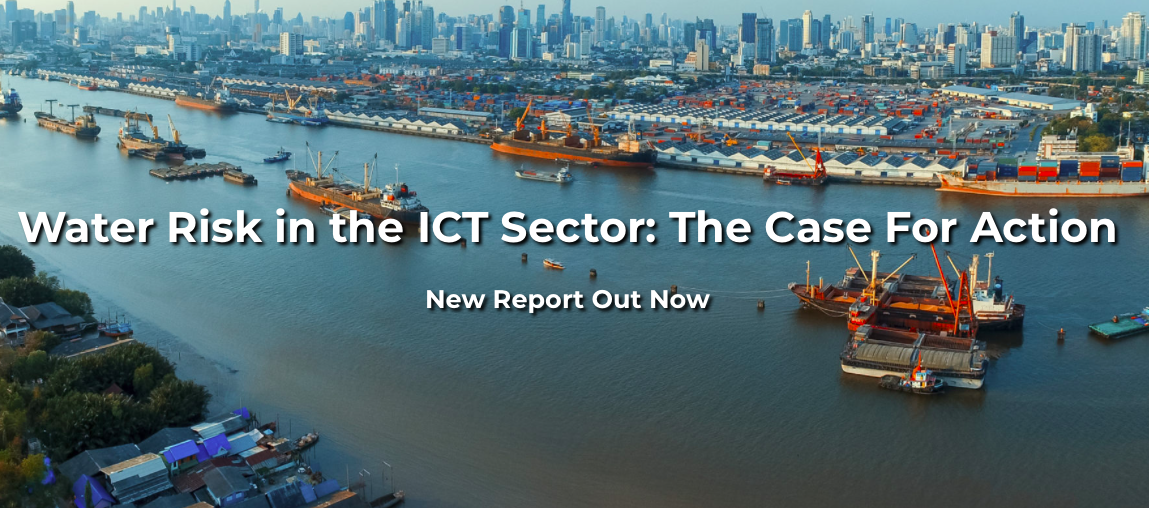ICT Supply Chain Faces High Flooding Risk
Report Calls For Sectorial Collaboration
7 Apr 2021 by The Water Diplomat
EDINBURGH, United Kingdom

Eighty Percent of Information and Communication Technology (ICT) supply chain locations face high to very high levels of water risk due to flooding and 68 Percent face high to very high levels of risk due to water quality.
"Water Risk in the ICT Sector: The Case for Action". published on World Water Day by the Alliance for Water Stewardship (AWS) in collaboration with the Responsible Business Alliance (RBA) and WWF examines the water risks faced by the ICT sector, advocates for water stewardship in order to manage those risks and then sets out practical steps for collaboration within the ICT sector.
Writing on LinkedIn, Sarah Wade, strategic programmes manager at the AWS said: “Our findings highlight the significant risk that water poses to business continuity and supply chain resilience, but it also demonstrates that many of the risks are found in the supply chain, outside of the direct control of many brands.”
By running more than 3,000 ICT sector locations through the WWF Water Risk Filter tool, analysts identified that the Taihu, Dong and Zhu river basins in China are material to the ICT sector as the top three in the distribution of supply chain facilities there. Risky river basins elsewhere in the world included the Danube and Rhine in Europe, and the Colorado and Upper Mississippi in the US.
“In Asia, many business clusters are located downstream in major basins, and close to coastal regions,” says Wade, “meaning that the risk of flooding is significantly elevated".
She describes some findings on flooding risk as a surprise, saying: “Even the most advanced businesses tend to focus on scarcity and pollution within their stewardship actions, not flooding, but scarcity was only identified as a medium to high risk for 15 per cent of sites assessed.”
The report also points to brands’ exposure to reputational and financial risk if they are found to be linked to a supplier that is having a significant negative impact on the environment.
Arguing the case for water stewardship, the report points to opportunities for strategic collaboration within the highly connected ICT sector and calls for a common approach to accounting for and communicating water-related impacts and dependencies.
“Often, clusters are situated ‘downstream’ in the basin, leaving suppliers exposed to risk from the activities of other water users ‘upstream’, demonstrating the need for collaboration to solve shared water challenges,” says the report.
Download the full report HERE
